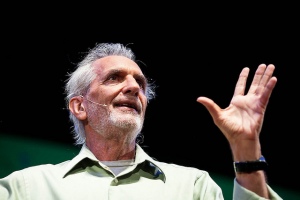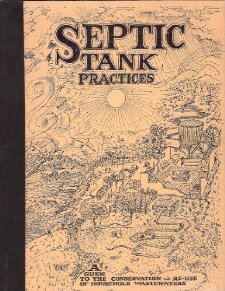Did you ever read Whole Earth Catalog and its sister publication Co-Evolution Quarterly in the 70’s and 80’s? One of its writers and founders, Peter Warshall, died yesterday morning. I got to meet him and connect with him at an Anasazi Fields Winery Poetry Reading – he was living in Tuscon, AZ then and came over for I think Gene Frumkin’s memorial service, and he has been working in NM with Bioneers and that publication Green Fire – doing a thing called “Dreaming New Mexico.” He was quite the ecology thinker and writer. I am glad I got to get a sense of what a neat person he was, in person. There’s a book of his I want to find – Septic Tank Practices – and another piece of his, Thinking Like a Watershed, demonstrates his thinking.
Link is to a talk he gave — Yup, he’s a poet and pragmatist, too.
http://longnow.org/seminars/02012/nov/28/enchanted-sun-coevolution-light-life-and-color-earth/
Light and beauty — by Stewart Brand (about Warshall’s talk)
“The naturalist’s task,” Warshall began, “is to observe without human-centered thoughts and human-centered agendas, to observe with a Gaian perspective and with the perspective of the organisms you’re watching. The naturalist considers all species in space/time as equally beautiful.” There’s a connection between art and science—between the poetic organization of thought and the pragmatic organization of thought. Light operates at a distance. That inspires anticipation, which becomes yearning, which becomes desire, which becomes hope, which generates transcendence. When an image becomes transcendent for you, it becomes part of how you perceive. “The Sun is the initiator of all sugars.”
Starting 250 million years ago, life rebelled and began generating its own light. There are 40 different kinds of bioluminescence, used for mate attraction, for baiting prey, for deceit. “Danger and beauty always go together. Deceit—not truth—is beauty. A term some art critics use is ‘abject beauty.’” Humans began the second light rebellion by harnessing fire a million years ago. Then came electric lights in the 1880s, and we transformed the light regime and hence behavior of many species. Artists like James Turrell shifted art from reflected light to emitted light, and that is increasingly the norm as we spend our days with screens radiating information into our eyes.
Our eyes are pockets of ocean that let us perceive only a portion of the Sun’s spectrum of light. Bees, with their crystal eyes, see in the ultraviolet. Snakes perceive infrared, and so do some insects that can detect the heat of a forest fire from 40 miles away.
Bowerbird males create elaborate art galleries, even devising forced perspective, to impress females. Young male bowerbirds watch the process for four years to learn the art. Throughout nature, watch for bold patterns of white, black, and red, which usually signal danger.
Every day there is a brief time without danger. At twilight—as daylight shifts to night—all life pauses. “That moment has a contemplative beauty that we cherish. It is a moment of Gaian aesthetic.”
Warshall’s talk, and his life, have been a convergence of art and science. Asked about how scientists could learn more about art, Warshall suggested they go to an art class and learn how to draw. As for how artists can learn more of science, he had two words:
“Outdoors. Look.”
— by Stewart Brand

Peter Warshall explains the purpose behind the New Mexico Dreaming project.
Photograph from TEDxABQ 2011 (an independently organized TED event) at the Hispanic Cultural Center in Albuquerque, New Mexico.
Photograph Copyright © 2011 Peter Norby .

Wow, so lucky to have met him! I true icon in the environmental/ecological movement.
I used to spend hours looking at the whole earth catalog. Wonderful way to spend your time. So 70’s, wish there was a real equivalent today!
Thinking about how it was written and all the different topics written about – you could read stories in there – and it inspired you to try stuff on your own.
Yes, lucky to have met him.
Thanks for coming by, Bill.
http://northernjaguarproject.cmail2.com/t/ViewEmail/r/5B393CA320DBA6492540EF23F30FEDED/20FA57332DA63FE5C67FD2F38AC4859C
This is a tribute to Peter Warshall by his wife, Diana Hadley.
I will include the other promised link soon.